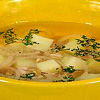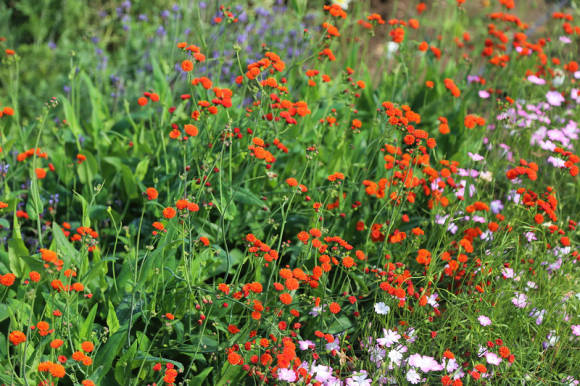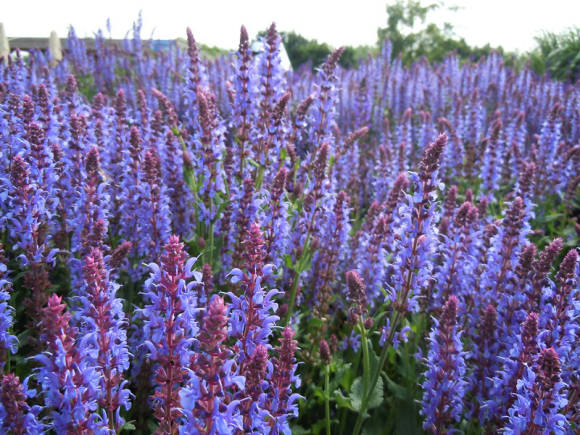
Caucasian scabiosa (Scabiosa caucasica) Is a perennial plant that is sometimes grown as an annual. In addition to being highly decorative, this scabiosa has medicinal properties. The plant is very unpretentious, 70–80 cm high, with a deep, but not strong root system.
Stems of Caucasian scabiosa are straight, strong, slightly branched, pubescent. Basal leaves are linear-lanceolate, petiolate, slightly bluish, and stem leaves are sessile, pinnately dissected. Peduncles are long, leafless.
Blue with a lilac shade, fragrant scabiosa flowers are collected in a capitate inflorescence up to 10 cm in diameter. The inflorescences are dome-shaped, and together with protruding stamens resemble small pin pads. There are plants with white, pink and deep purple flowers. Blooms in June – July for 30–35 days. Scabiosa inflorescences attract butterflies, which, with the help of long proboscis, drink delicious and nutritious nectar from them.
Caucasian scabiosa has very decorative hybrid forms and varieties, differing in the height of the bush and the color of the inflorescences: Blauer Atlas - blue-violet flowers; Clive Grieves - flowers are light purple, inflorescences are very large; Miss Wilmotg - large inflorescences, pure white flowers; Nachtfalter - flowers are intense blue; Clive Greaves - large-flowered, bluish inflorescences on high stems; Morheim Blue - deep purple inflorescences; A compliment - inflorescences of a noble dark lavender color; Perfect - lavender inflorescences; Perfect Weiss - white inflorescences; Fama is the bluest of the varieties.
Growing
Scabiosa prefers sunny, wind-protected areas with well-drained, light, loose and fertile soils. Before planting, 10–15 kg of organic fertilizers per 1 square meter are introduced into the soil and processed to the depth of a shovel bayonet. Scabiosa responds well to the application of phosphorus-potassium fertilizers, increasing the brightness of the color of flowers. Mineral fertilizers must be applied during the budding period.

The plant requires moderate watering throughout the summer, with intensification during dry periods. The plant tolerates short-term drought well, but does not tolerate wet soils at all.
Scabiosa growing in a windy place needs to be tied up with the stems, then its flowers will not droop. It is necessary to regularly cut the wilting scabiosa inflorescences so that all new flower buds are tied. In the fall, it is necessary to cut the stems at a height of 10 cm from the ground.
Scabiosa hibernates without shelter, but in cold winters it freezes and requires light cover with leaves. Therefore, before severe frosts, it is necessary to mulch it with light material, for example, fallen leaves or straw. Compost is not suitable for this purpose, as it contains too much moisture.
Reproduction
Scabiosa is propagated by seeds and vegetatively - by basal cuttings or by dividing the bush. Seeds are sown in autumn or March in a greenhouse, or in May in open ground. Seedlings appear 20-25 days after sowing. Seedlings dive, planting at the beginning of June in a permanent place according to the scheme 25x30 cm. When grown from seeds of scabiosa, it can bloom in the first year.
In the spring, plants can be reproduced by division. Remove the formed clumps and divide them so that there are two or three shoots with roots in the sections. Old scabiosa scattered around the garden can be reproduced in the same way. Planting every 3-4 years rejuvenates.
Usage
Caucasian scabiosa is used to create spectacular borders. With its help, you can beautifully arrange the transition from tall plants to undersized plants that fill the foreground. It looks best in groups of three or more plants. It can be planted along a hedge growing in the sun.
Low-growing scabiosa varieties are good in rocky gardens.They can also be grown in a variety of containers. In pots, Caucasian scabiosa can be combined with other species - for example, knocking along the edges with lobularia or lobelia.
Scabiosa is planted singly or in groups in mixborders and ridges, near shrubs. It goes well with asters, irises, hosta, and dwarf scabiosa is an ideal flower for growing along sidewalks. Scabiosa is also used in bouquets, because cut flowers remain in water for up to a week.









